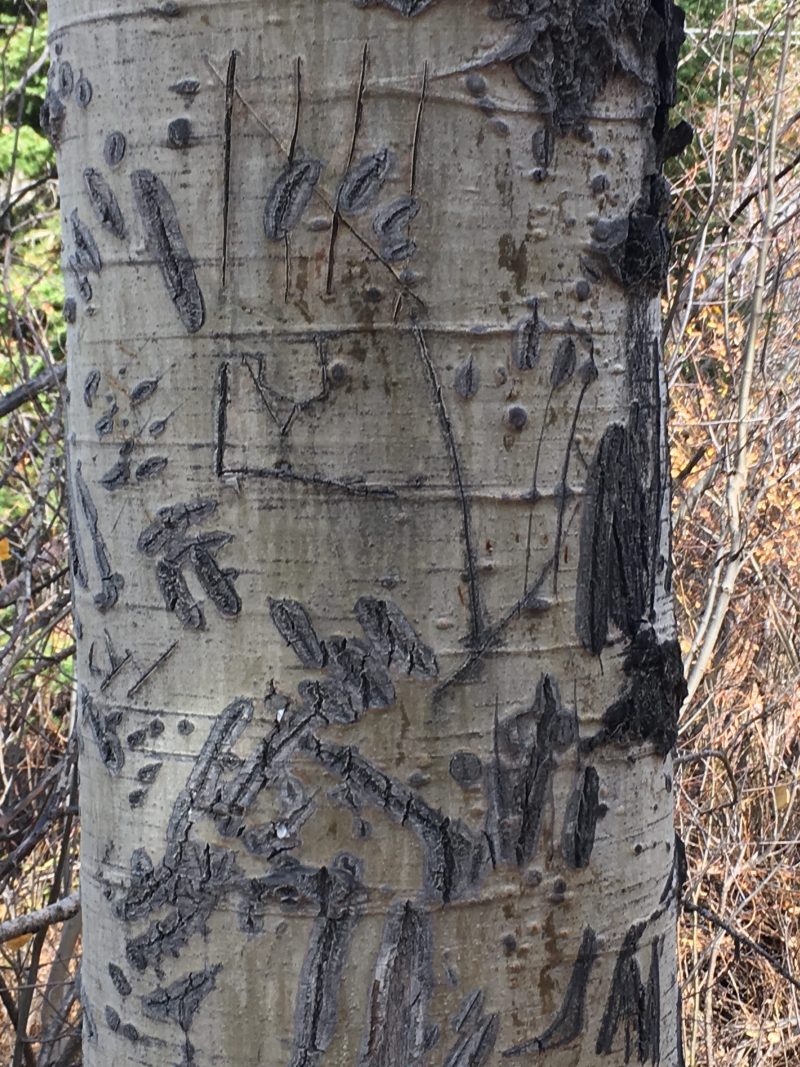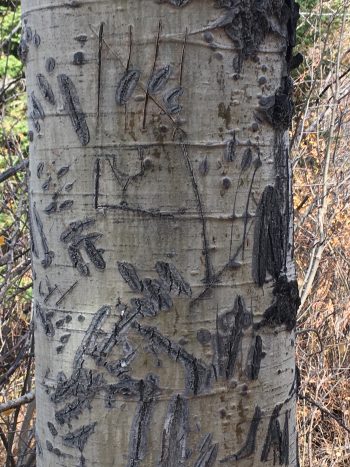
The month of October started and ended wet and is characterized by rapid cooling temperatures as summer gives way to fall. On average, the start of the month has highs in the upper fifties and ends with highs in the forties. October daylight decreases by 1.25 hours over the month. On October 31, sunrise was 7:58 AM, sunset 6:15 PM.
This October was a bit warmer than average. Monthly temperatures were warm enough for rain in the valley and snow on the high peaks. Highs were in the low fifties as the month ended. As I look at statistics from this past summer, it was cooler than normal but also drier.
Fall is mating season for many of the larger animals. Elk bugle and gather their harem of females. Bull Moose strut through the forest with one or maybe two females in tow. Mule Deer, Bison and Pronghorn are also sexually active in October but not a peak month for them. Big Horn Sheep mate in November.
In general, the timing of reproduction is based on gestation period and to ensure young are born in spring or mid-summer. This increases their chance of winter survival. Larger animals have an 8 to 9-month gestation period so mating occurs in the fall so young arrive in the spring. Young ungulates/ hooved animals must be large enough and have the strength/endurance to survive our long winters. Being born early in the summer is key.
In contrast, Mountain Lions mate in early spring with a 3-month gestation period so birth occurs in July and August. Young cats/kittens spend 13 to 24 months with the female and live in dens. Since they are predators, winter is their season since prey species become weakened in deep snow. As we look at different processes and adaptations to survive, I am always amazed how Mother Nature has it all figured out.

Bears mate in June. In the fall, they prepare for hibernation. Many females enter the den pregnant to give birth during their winter slumber. Once the embryo implants in the uterus, gestation period is six weeks. If the female isn’t healthy enough to survive hibernation and nurse a cub, the embryo won’t implant or be viable. Natural selection at work. Bears are quite active in October as they consume excess amounts of food and gain about 3 pounds a day.
Bears were recently in the press as another Grizzly was killed by a vehicle in Grand Teton Park. The article reported 52 grizzles have died this season due to conflicts with people, livestock, vehicles and hunters. The great bear is an indicator species for the Greater Yellowstone Ecosystem which means for the ecosystem to be healthy and in balance, the grizzly needs to survive. As they become delisted and start to get hunted, an interesting story will unfold. My heart roots for the grizzly.
November means town quiets and we go on vacation. The Hole Hiking Experience winter season begins November 22, 2016. Let’s manifest colder temperatures and lots of snow! Enjoy the quiet time!
What’s in the woods
10/7- Granite Creek- herd of female mule deer and fawns on private property.
10/9- Moose-Wilson Rd- bull moose in pond
10/10- duckie down snake river, getting buzzed by mature bald eagle
10/10- Teton Village Road- lots of elk around! Herd of cow elk and a bull with harem of females
10/11-Inner Park Road, Grand Teton Park- coyote, elk, ravens
10/12- black bear killed on Teton Village Road- so sad!
10/14- major storm to hit WY
10/18- Tetons covered in snow
10/19- Flat Creek- belted kingfisher
10/21- bluebird day- Jackson, WY- Dusky Flycatcher feeding in my chokecherry
Tour Suggestion
November is a time of change as snow accumulates and trails get muddy. Hard to predict what activity is best. Hike when trails are dry or enjoy a walk on a bike path if conditions are wet and sloppy. A drive down the Gros Ventre Road is always great to look for wildlife. Many roads close on November 1 so check a travel plan. The visitor center on North Cache is open so worth a visit for current conditions. Did I mention a good book? November is a great month to sit by a fire, relax and enjoy a good read. Have fun and let it snow!


